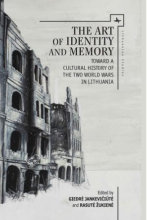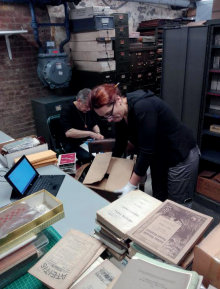 A new book The Art of Identity and Memory: Toward a Cultural History of the Two World Wars in Lithuania in series “Lithuanian Studies without Borders” came out in August of 2016. The book edited by Giedrė Jankevičiūtė & Rasutė Žukienė consists of wide-ranging set of articles. It is a forceful demonstration of how much the experience of EastCentral and Eastern Europe, largely neglected until now, needs to be integrated into evolving scholarship on the era of the world wars.
A new book The Art of Identity and Memory: Toward a Cultural History of the Two World Wars in Lithuania in series “Lithuanian Studies without Borders” came out in August of 2016. The book edited by Giedrė Jankevičiūtė & Rasutė Žukienė consists of wide-ranging set of articles. It is a forceful demonstration of how much the experience of EastCentral and Eastern Europe, largely neglected until now, needs to be integrated into evolving scholarship on the era of the world wars.
The collection diagnoses the challenge of achieving an enlarged historical and artistic perspective, and then goes on to meet it. Themes that are universal (exile, loss, trauma, survival, memory) and the undying subjects of art and artistic efforts at representation, here find specific expression. The case of Lithuania and its diverse populations is revealed in its full significance for a modern European history of the impact of the age of the world wars. The book is the first title in a new series dedicated to Lithuanian Studies. Other two books that came out in December of last year are: Spatial Concepts of Lithuania in the Long Nineteenth Century (ed. Darius Staliūnas) and The Creation of National Spaces in a Pluricultural Region: The Case of Prussian Lithuania by Vasilijus Safronovas.
 The vast majority of current Lithuanians living in Springfield, IL (USA) come from Lithuanian miners who arrived to America from Lithuania in the early 20th century. In 1914, the Lithuanian community of Springfield consisted of several thousand Lithuanians. The records of Lithuanian St. Vincent de Paul Parish in Springfield show that year, over 500 Lithuanian families belonged to the church, and between 1909 and 1919, 1,063 Lithuanian babies were baptised there. However, these figures do not indicate the actual number of Lithuanians, because quite a number of them were socialists and did not belong to the church or visited other Catholic churches in the city, such as St. Aloysius, St. Peter and Paul and St. Joseph.
The vast majority of current Lithuanians living in Springfield, IL (USA) come from Lithuanian miners who arrived to America from Lithuania in the early 20th century. In 1914, the Lithuanian community of Springfield consisted of several thousand Lithuanians. The records of Lithuanian St. Vincent de Paul Parish in Springfield show that year, over 500 Lithuanian families belonged to the church, and between 1909 and 1919, 1,063 Lithuanian babies were baptised there. However, these figures do not indicate the actual number of Lithuanians, because quite a number of them were socialists and did not belong to the church or visited other Catholic churches in the city, such as St. Aloysius, St. Peter and Paul and St. Joseph.



